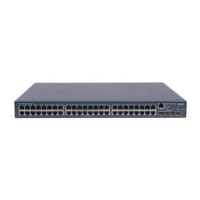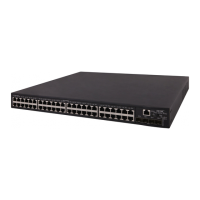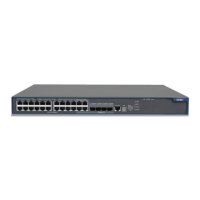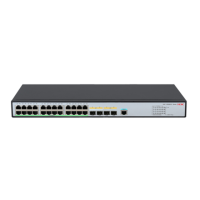1-6
z Logs occupy storage space of the device, thus affecting the performance of the device. Therefore,
it is recommended to disable SNMP logging.
z The size of SNMP logs cannot exceed that allowed by the information center, and the total length of
the node field and value field of each log record cannot exceed 1K bytes; otherwise, the exceeded
part will not be output.
z For the detailed description of system information, the information center and the info-center
source command, refer to Information Center Configuration in the System Volume.
SNMP Trap Configuration
Enabling the Trap Function
The SNMP agent sends traps to the NMS to inform the NMS of critical and important events (such as
reboot of a managed device). Two types of traps are available: generic traps and self-defined traps.
Generic traps supported on the device include: authentication, coldstart, linkdown, linkup and
warmstart. The others are self-defined traps, which are generated by different modules. As traps that
occupy large device memory affect device performance, it is recommended not to enable the trap
function for all the modules but for the specific modules as needed.
With the trap function enabled on a module, the traps generated by the module will be sent to the
information center. The information center has seven information output destinations. By default, traps
of all modules are allowed to be output to the console, monitor terminal (monitor), loghost, and logfile;
traps of all modules and with level equal to or higher than warnings are allowed to be output to the
trapbuffer and SNMP module (snmpagent); and traps cannot be sent to the logbuffer. You can set
parameters for the information center based on the levels of the traps generated by each module, and
thus decide the output rules of traps (that is, whether traps are allowed to be output and the output
destinations). For the configuration of the information center, refer to Information Center Configuration
in the System Volume.
Follow these steps to enable the trap function:
To do… Use the command… Remarks
Enter system view
system-view
—
Enable the trap function
globally
snmp-agent trap enable [ configuration |
flash | standard [ authentication |
coldstart | linkdown | linkup | warmstart ]
* | system ]
Optional
By default, the trap
function is enabled.
Enter interface view
interface interface-type interface-number
—
Enable the trap function of
interface state changes
enable snmp trap updown
Optional
Enabled by default.

